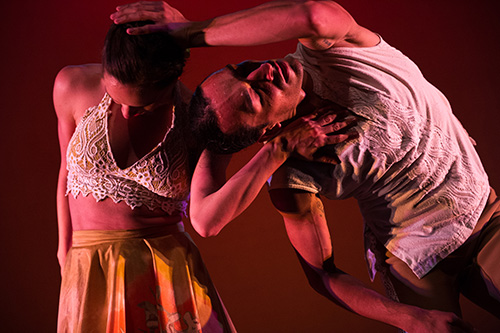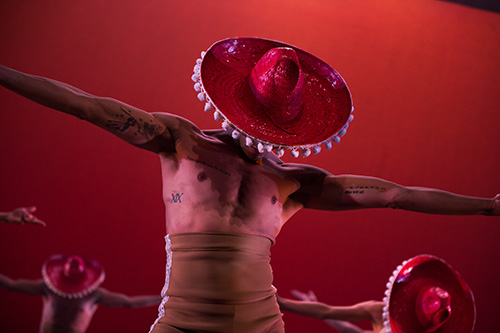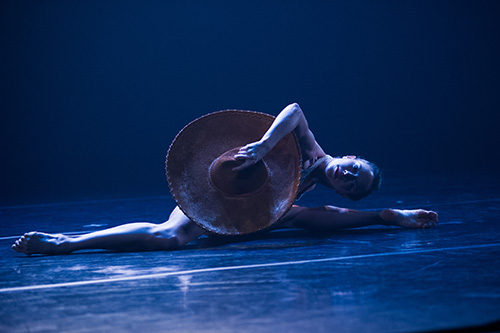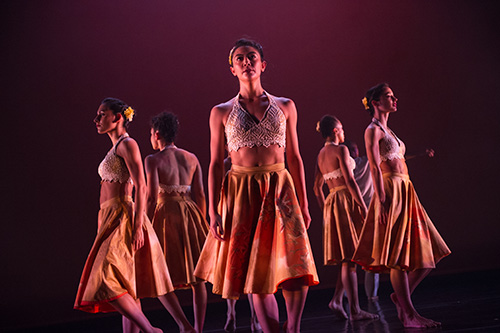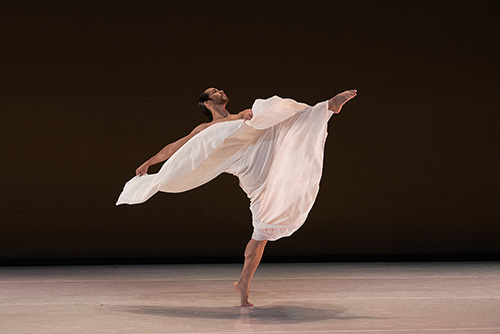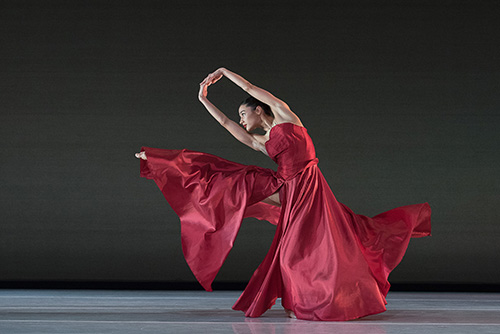Building Cultural Bridges
An Interview with Michelle Manzanales
BY EMMALY WIEDERHOLT
Michelle Manzanales is a choreographer and dance educator in New York City. Before being named director of the Ballet Hispánico School of Dance in December 2016, she served as rehearsal director and artistic associate of the main company of Ballet Hispánico since 2010. As part of a special dialogue in honor of National Hispanic Heritage Month, Michelle discusses the experience of being suspended between cultures, and the difficulty in bridging those cultures.
Photo by Paula Lobo
~~
When you’re choreographing, do you work from a political, social or personal place, or a mix?
I don’t start with the intention of being political but, because we’re human and politics influence our lives, that comes up. My choreography is often about a personal experience that inspires a dance. That’s the jumping point.
My most recent piece, “Con Brazos Abiertos,” is about my experience growing up Mexican American and being suspended between two cultures. I grew up in Houston, Texas. Even though it’s a very international city, I just wanted to fit in as I was coming of age. Similarly, my mother came of age in a time that stressed assimilation. Everyone just wanted to be part of the mainstream. This was passed down to me in an unintentional way. When I’m with my Mexican family, I’m often seen as the Americanized gringa. But when I’m in a non-Hispanic community, I’m often seen as exotic. I feel other-ed within both parts of my cultural makeup. Because the United States is such a melting pot, there are many others who have had similar experiences.
In the piece, I explore several iconic Mexican symbols like mariachis, the Mexican sombrero or the folkloric skirt. I tell stories of Mexican heritage through contemporary dance.
Photo by Paula Lobo
Is it important to you to be recognized as a Hispanic/Latina or female choreographer, or do you see the modifiers as a form of tokenism?
I want to just be seen as a choreographer; the fact that I have Mexican heritage or am female shouldn’t matter. On the other hand, being part of an organization like Ballet Hispánico, it’s part of our conversation. And having conversations like these help create bridges between people who have different cultural backgrounds.
One comedian I really love, Gabriel Iglesias, is also Mexican American, and he talks about how he went to the Middle East to do a show, and it was one of the first times he’s ever been introduced as just a comedian. Everywhere else, he’s introduced as a Mexican American comedian. Those labels can be difficult.
The topic is something that comes up often in our talkbacks at Ballet Hispánico. I remember specifically that after one of our Joyce season performances, a gentleman stood up and said that we were really great for a Hispanic company. I don’t think he realized that what he said was hurtful, but it is part of our reality. As much as I just want to be seen as a choreographer, I can’t ignore that these conversations exist. And it’s okay. I’d rather be having the conversations than not talking about the topic.
Photo by Paula Lobo
In your experience, do you feel there are enough opportunities for Hispanic/Latina dance artists, or would you like to see more?
Again, it’s a complex question. When you don’t see your culture represented, it’s not necessarily because there isn’t a posting that says, “Hey Hispanic dancers, come audition!” It’s because, in the field, we aren’t being chosen. We can’t really say that we aren’t being chosen because we’re Hispanic, but somehow the evidence shows the contrary.
I want to see everyone acknowledged for their talent and what they bring to the table. People should be given opportunities based on what talent is required. That sounds utopian, but it should be based on skillsets. The dream is that everyone can be taken at face value.
What’s your background in dance? Did you ever feel like your heritage was incongruous with your dance training, especially given the ballet aspect of Ballet Hispánico?
Ballet Hispánico is in fact not a ballet company, even though we have ballet in our title. Ballet Hispánico was born almost 50 years ago by our founder, Tina Ramirez. Tina trained in Spanish dance – folkloric, flamenco and Escuela Bolera. Her students became so proficient that she wanted to give them opportunities to perform. That was basically the birth of Ballet Hispánico, which is now a huge organization with a company, a second company, a school and education opportunities worldwide. We have a strong tradition of Spanish dances, but Tina also loved ballet and contemporary dance. Those were the three pillars of the organization for a long time. Today, the school not only offers those three pillars in our pre-professional program, but also jazz, tap, salsa, Afro-Cuban and hip hop. We celebrate many different forms.
Photo by Paula Lobo
As for myself, I grew up with classical training, mostly ballet. That’s definitely present in my choreography. I’m no expert in folkloric dance forms, but I’m influenced by them. At Ballet Hispánico, we often talk about the idea of fusion. I feel like we’re parallel to what’s generally happening in the United States; that idea of a melting pot is very similar to what happens here at Ballet Hispánico. One of our taglines is that we represent the American contemporary voice.
What are some things individuals can do to achieve better representation of different voices in dance?
What I try to advocate with my students is to create the environments that we want to live in. For my young dancers who are the future, I encourage them to look into the dance world and find the people who inspire them, and go train with them and experience their work. Maybe after they have different experiences, they’ll gain a different point of view and a different vision. Maybe we’ll start to see more Latina voices, or whatever culture we’re talking about. It’s up to this generation to create those platforms.
Beyond being artists on the stage, it’s important to be an advocate. I realize every student who comes through Ballet Hispánico’s school won’t be a professional dancer, but I hope they’ll always carry the love of the art form with them. Maybe they’ll become funders or donors, or presenters at institutions that are pushing for more diversity.
Photo by Christopher Duggan
In thinking about your work, what would you like to be most known for?
I enjoy how choreography allows us time to reconnect with ourselves and feel an emotion. Everyone is so often on the go, we don’t regularly take the time to unplug and experience emotion. It’s important for me as a choreographer to give my audience some kind of emotional experience. I want them to feel transported by the dance. It’s not necessary for them to like it, but for it to make them think or question. I like to tackle subjects through the beauty of dance, and give people an opportunity to laugh or mourn, because we don’t do it enough. That would be what I want.
Any other thoughts?
People are often worried about offending each other, and this makes it difficult to have conversations. Language matters. The way one person communicates could be offensive to another person, even though they don’t mean to be offensive. I did an interview for a choreographic institute where I described myself as American, and a viewer took offense because the United States is just one part of the Americas – there’s also Central America and South America. It can stop the flow of speech if you’re worried about offending someone, but the conversations are still important.
Photo by Christopher Duggan
~~
To learn more, visit www.ballethispanico.org.

